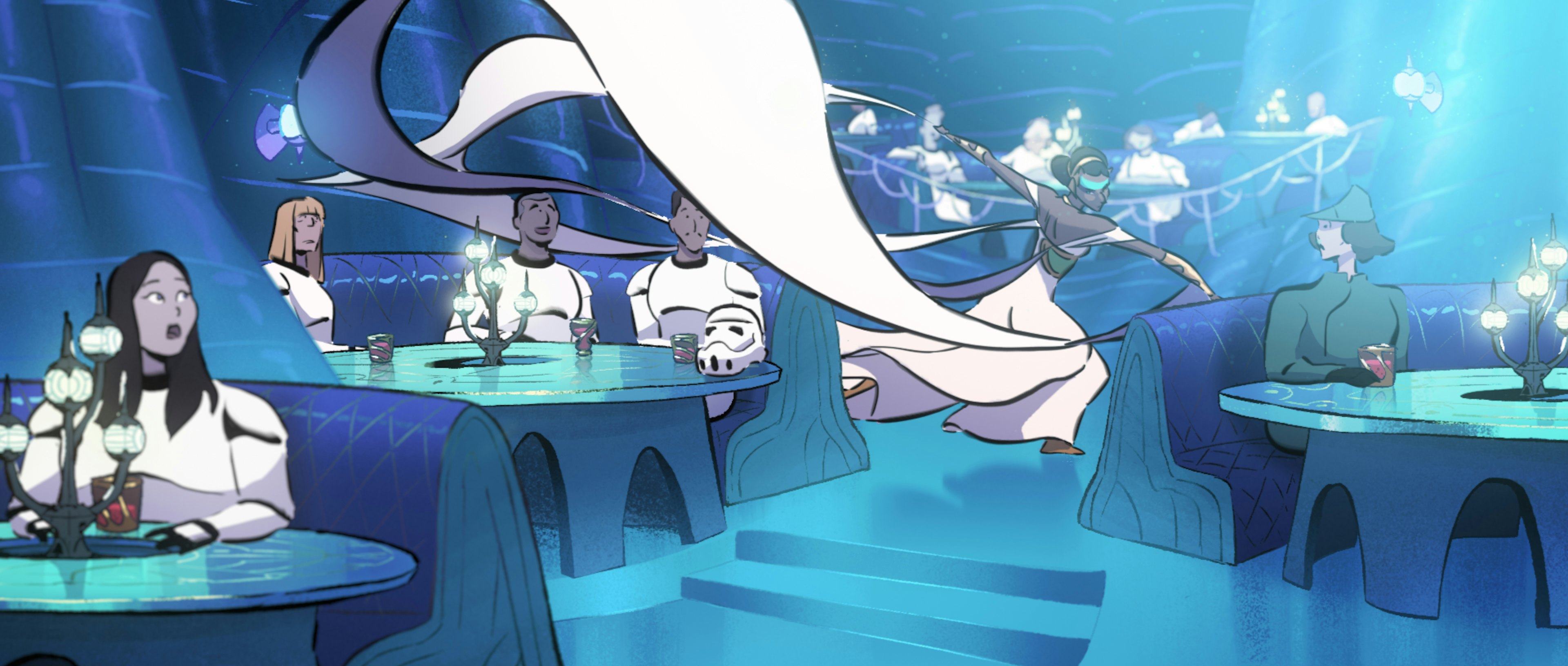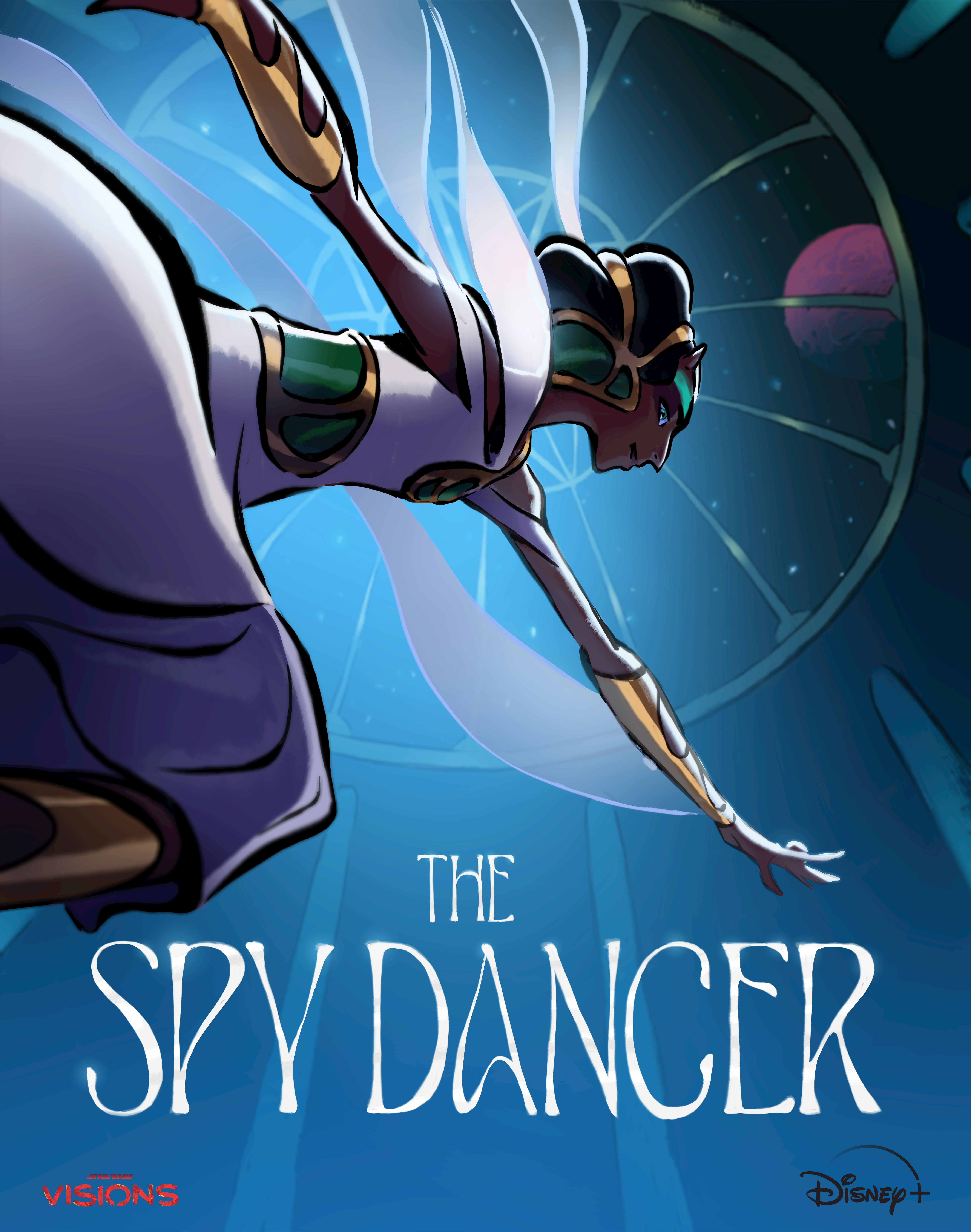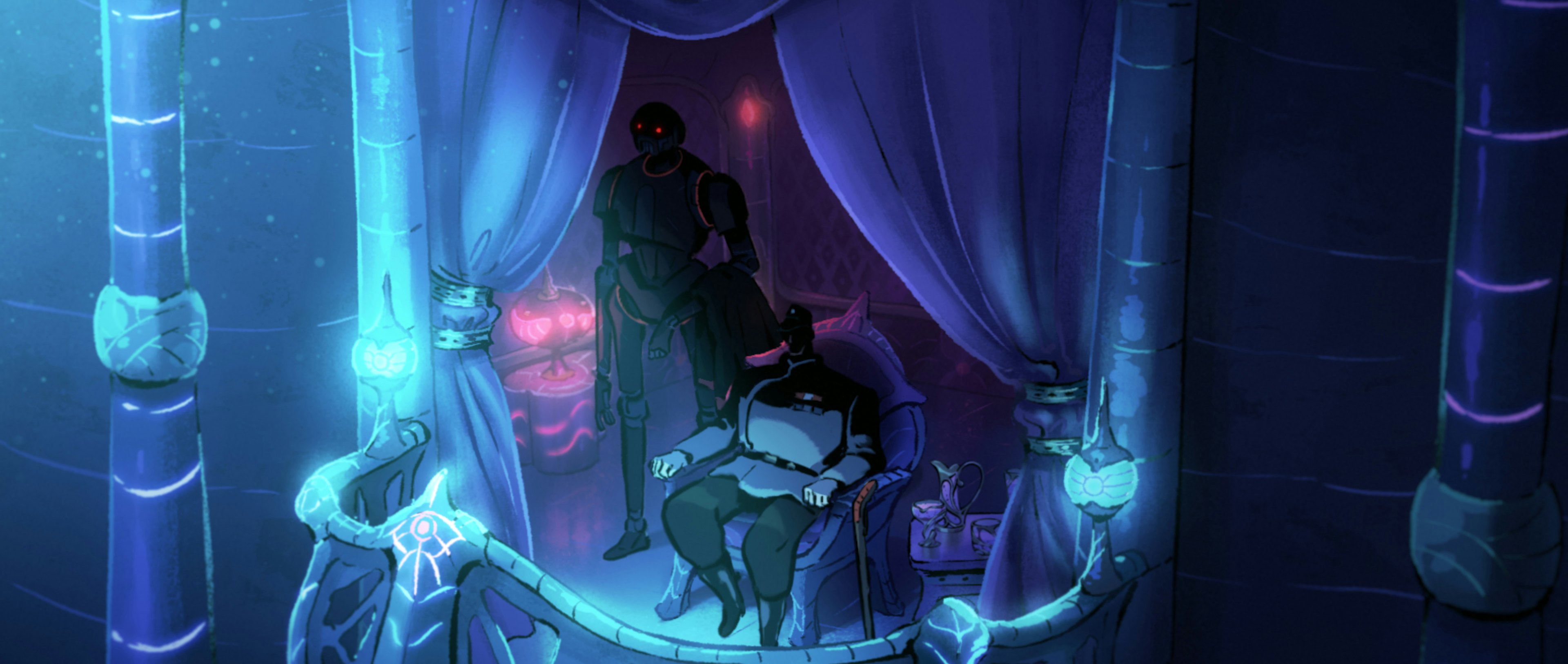
At its heart, Star Wars has always been about the fight against fascism, despite what some people on the internet might want you to believe. But while George Lucas modeled the Empire after America (the Rebel Alliance is the Viet Cong) it’s hard to ignore the parallels to Nazi Germany — or one thing, both empires have Stormtroopers).
With that in mind, it may come as a surprise that no Star Wars story has fully explored one key aspect of living under Nazi occupation. Until now.
Star Wars: Visions Season 2, currently streaming on Disney+, expands the scope of the original season beyond Japanese animators to provide a global perspective on that galaxy far away. Episodes from studios in England, Korea, India, and Chile (among others) all provide their own unique takes on the franchise, but one entry stands out: “The Spy Dancer” by French animator La Cachette.

“The Spy Dancer” tells the story of a cabaret theater on an Empire-occupied planet. Every night, the massive building fills with Stormtroopers and Imperial officers who drink and watch the performance. But secretly, the theater is run by a group of Rebels who covertly place trackers on the soldiers enthralled by their show.
Perhaps unsurprisingly coming from a French studio, this story feels like a direct reference to life in Nazi-occupied Paris, where German soldiers roamed the streets and lived it up while a resistance movement quietly grew in the shadows. If you remove the bartender robots and swapped the white Stormtrooper armor for Nazi uniforms, “The Spy Dancer” might even feel like a scene out of Inglorious Basterds.
But that’s just the setup. Like so many of Star Wars Vision’s bite-sized stories, “The Spy Dancer” comes with a twist. And in this case, it’s a brutal one. I won’t spoil the specifics, but if this animated short spawns a franchise of its own, it could rival the Skywalker Saga when it comes to the themes of family, legacy, and betrayal.


Of course, “The Spy Dancer” isn’t the only Visions episode to put a new spin on Star Wars. “I Am Your Mother” injects this galaxy with the kind of dry British humor the Wallace and Gromit animators at Aardman do best, while “The Bandits of Golak” transposes the classic story of a young Jedi on the run to a setting inspired by its studio’s Indian roots. But there’s something especially visceral about the way La Cachette takes a well-worn piece of real-world history and applies it to Star Wars in a way we’ve never quite seen before.
Hopefully, the rest of Lucasfilm is taking notes, and we’ll see a return to what made Star Wars so great in the first place: the fight against fascism, whatever and wherever it may be.







